Ranikot Fort Jamshoro, Pakistan
You’ve probably heard of The Great Wall of China. But did you hear of “The Great Wall of Sindh“? Today, we’ll bring you on a virtual journey to Ranikot Fort in Pakistan. There’s a lot of history and mystery surrounding Rani Kot Fort Jamshoro. So far, archeologists have discovered several artifacts inside the Fort, including coins, pottery, and weapons. They’ve also found evidence of a Buddhist monastery and a Hindu temple. Who knows what else they will uncover at the Fort since excavations are still ongoing! The enigmatic structure of Ranikot fort offers a combination of mystery, heritage, folklore, and adventure.
So if you’re looking for an adventure and some amazing photos to post on Instagram, add Ranikot Fort to your list of must-visit destinations.
History of Ranikot Fort
This Fort in Jamshoro is a mystery as nobody knows its origin and construction time. The reason behind establishing this Fort is unknown, but the colossal size of the Fort is impressive. In 2019, some archaeologists decided to unveil the history of the Ranikot Fort. According to the report of Kamal Hyder from Al-Jazeera, San Marino, the world’s fifth-smallest country, would beautifully fit within the massive walls of Ranikot fort. Built in the middle of nowhere, Ranikot Fort is a spectacular sight to behold.
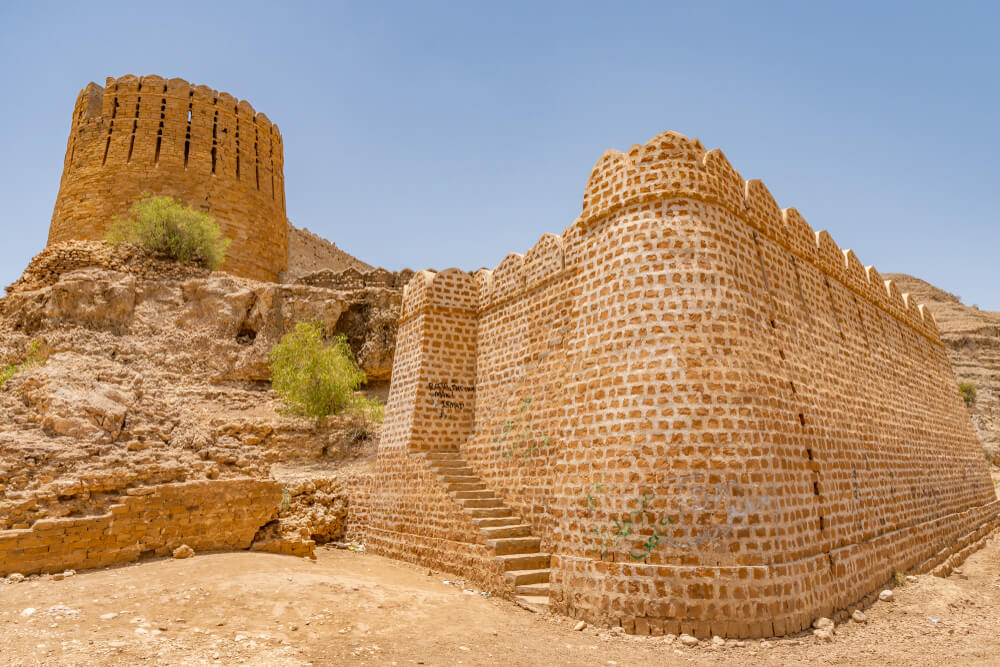
Some claim that the establishment of the Fort happened in the early 20th century. According to Isobel Shaw,” the Ranikot Fort stands in the middle of nowhere, defending nothing,”
The first native scholar to thoroughly investigate the history of Ranikot Fort is Badar Abro, who wrote the 300-page book on the history of Ranikot fort titled Ranikot: The Wall of Sindh. Since 1985, he constantly visits Ranikot to expose legends about the Talpur Mirs’ connection to the city. He discovered an inscription written during the Gupta Dynasty (3rd Century C.E).
Who Built Ranikot Fort?
There are various predictions and conflicting claims regarding the establishment of the Ranikot Fort. According to a 2009 AMS Radiocarbon Study conducted on the charcoal extracted from a crumbling pillar near the Sann Gate, the Fort’s renovation occurred in the early 18th (during the rule of the Kalhora dynasty) and early 19th centuries (during the reign of the Talpur dynasty). But since these pillars were not a part of the original structure, the archaeologists still speculate about the Fort’s origin.
Some archaeologists claim that Imran Bin Musa Barmaki, the governor of Sindh, built the Ranikot Fort Jamshoro in 836 during the Abbasid era.
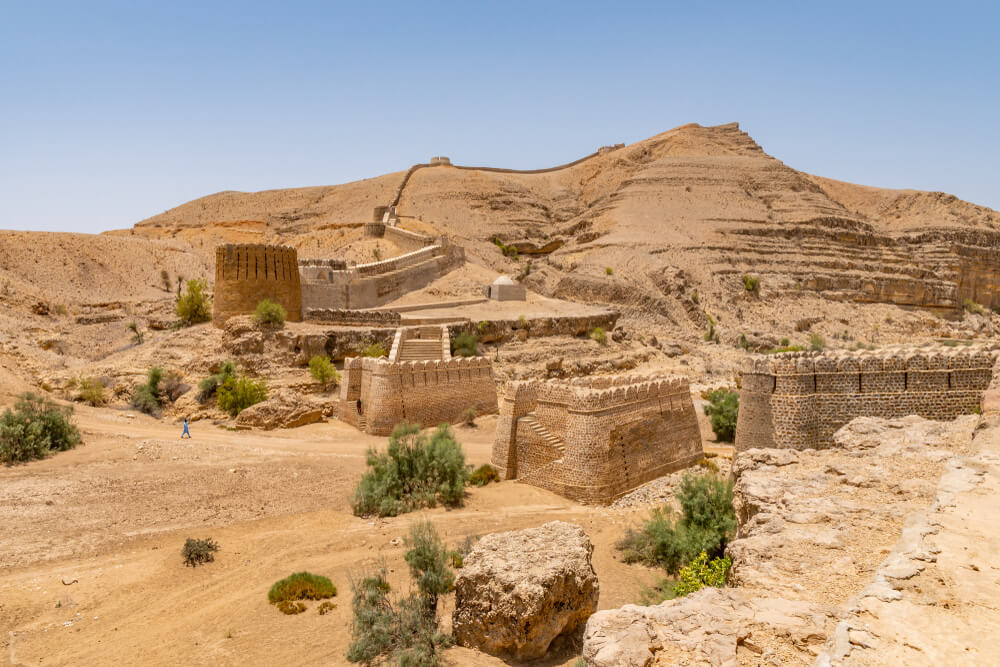
According to some previous research, the Ranikot Fort in Pakistan came into being during the regimes of the Sassanians, the Bactrian Greeks, the Parthians, and the Scythians. However, more recent evidence suggests that the Fort was constructed during the Talpur dynasty and renovated during the rule of Sindh’s prime minister (Nawab Wali Muhammed Leghari). Ethnically Baloch, the Talpurs were under the control of Kalhoras until a Kalhora assassinated their king, prompting the Talpurs to rise and overthrow them. The Mirs of Talpur required a safe refuge during times of unrest. They allegedly built this Fort to defend themselves from the British.
In 2018, Culture, Tourism & Antiquities Department made a documentary in which a resident informed that Mir Karam Ali Talpur and his brother Mir Murad Ali built the Rani Kot Fort Jamshoro in 1752 for 1.2 million rupees. In contrast, other residents speculated about the involvement of the Roman empire in establishing the Fort. However, most believe that Cyrus the Great constructed the Ranikot Fort in 540 B.C.
The Architecture of Ranikot Fort
This gigantic piece of beauty, with a circumference of 35 kilometers, is a feat of architecture. The Fort stands on an elevated plateau, and one side of Ranikot Fort confronts the rocky Kirthar Range. Most of the 26 km long wall is composed of naturally occurring cliffs and mountains, some reaching heights up to 2000 feet above sea level. The high walls with a measured circumference of 26km cover the other three sides of the Fort constructed using yellow sandstone and lime and mortar. With a total area of 65 kilometers square, the Fort is a legitimate candidate to hold the title of “the largest fort in the world.” The tremendous existence of the Fort connects multiple lonely summits of the Kirthar Hills. Three of the numerous bastions surrounding the Ranikot Fort’s walls are semi-circular. The Fort’s northern border is naturally rugged and steep. Stone and lime mortar are the only materials used to construct the entire Rani Kot Fort Jamshoro. The vast expanse of land around the Fort is typically desolate, but it can’t mask the Fort’s magnificence. Archaeologists working in Sindh agree that the Talpur dynasty spent 1.2 million rupees on reconstructing some of the present-day structures of the Ranikot Fort in 1812. Visitors may see the Fort’s enormous structure visible from five kilometers away.
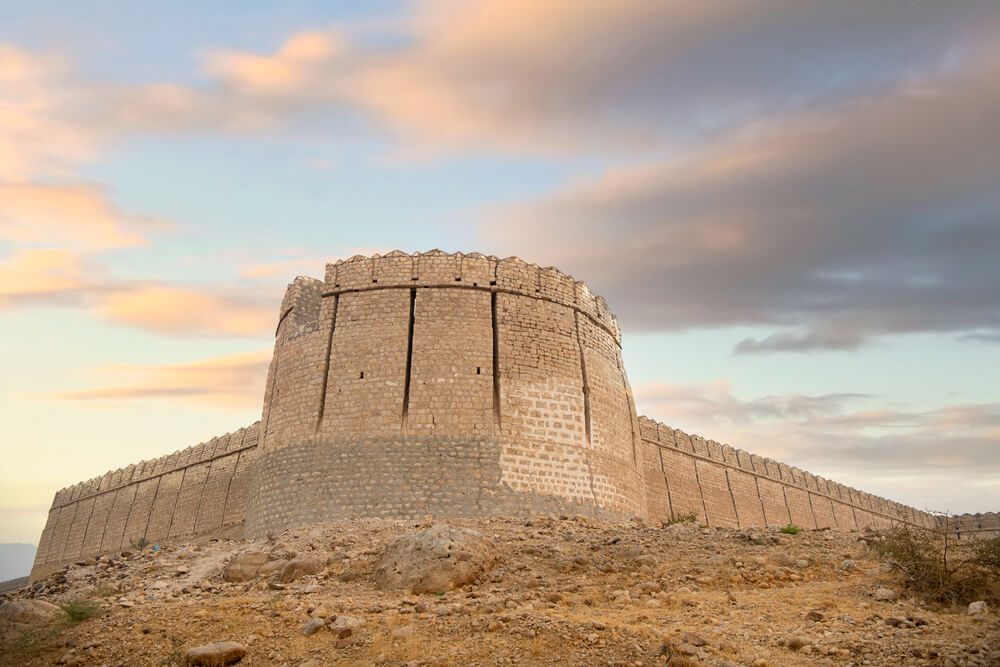
What are the Attractive Features of Ranikot Fort?
There are many enigmatic attractions at Pakistan’s fascinating wonder, Ranikot Fort; besides the Fort’s structure, beautiful ponds, valleys, ammunition depots, hills, a mosque, and watchtowers add more to its grandeur and beauty. It offers tourists a breathtaking view of the surroundings thanks to its interconnected crescent and rectangular-shaped bastions. Let us talk about all the attractive features in detail.
The Four Mysterious Gates of Ranikot Fort
Built in a zig-zag pattern, the Fort features rhomboid-shaped entry gates, namely Mohan Gate, Shah-Pere Gate, Sann Gate, and Amri Gate. Pseudo-gates include the Amri Gate and the Shah-Pere Gate.
The Mohan Gate (Western Gate) is the rarely used Gate of the Fort. A rain stream named ‘Reni’ or ‘Rani Nai’ enters the Fort from its western Gate. This rain stream is the source of the Fort’s name. So, Ranikot is the Fort of a rain stream.
The main stream flows through the Fort and exits it through its most used “Sann Gate” on the eastern side after tumbling in a series of blue pools to irrigate farmland. It then covers 33 more kilometers before it reaches the Lion River-Indus. To gain a beautiful perspective of the surrounding landscape, climb up to the top of the Fort through the Sann gate, the only Gate still in good condition.
The Amri gate is towards the side of the ancient town of Amri. This Gate undoubtedly gets its name from the prehistoric remains of Amri.
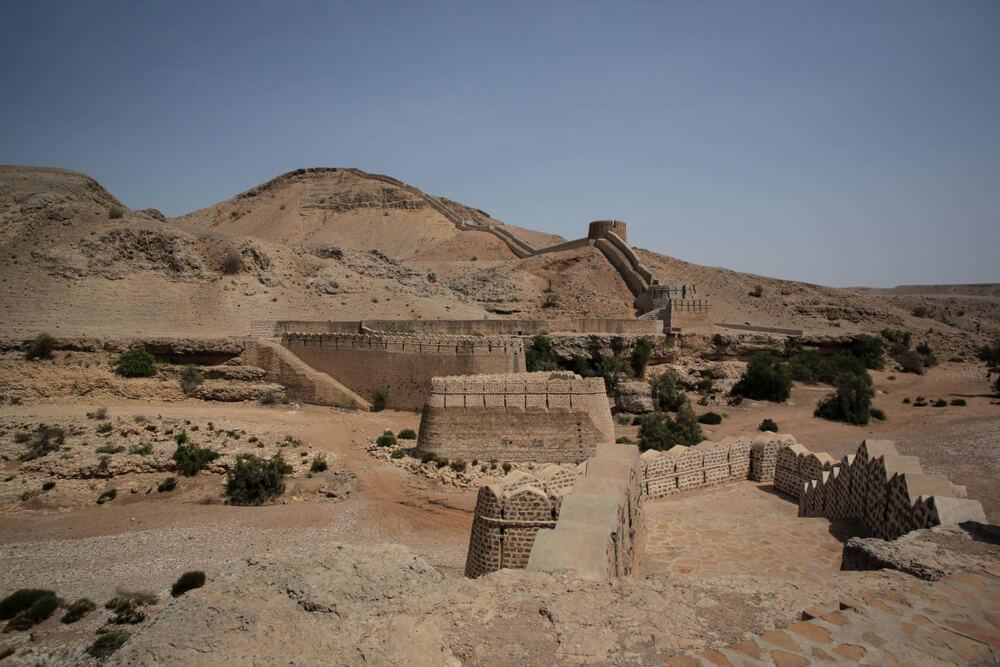
Shah-Pere Gate seems to be a fictitious entrance on the southern side that derives its name from a limestone boulder with a rough foot imprint. Locals assert that Hazrat Ali or another religious icon left behind the sacred footprint. This Gate appears to be a later breach in the fort wall instead of a formal one because there are no bastions, watchtowers, or remnants at the Gate’s site.
Three Small Fortresses inside the Ranikot Fort
Inside the enormous Ranikot Fort are three fortresses: Miri Fort, Sher Garh (Abode of lions), and Mohan Kot.
The smallest of the three fortresses, the Miri Fortress, lies three kilometers from the main entrance (Sann Gate) and is thought to have served as the Mir Royal Family’s home. The “Mir,” which means “top,” is where Miri fort gets its name. For instance, the top of a hill or the chief of any Baloch tribe. The entrances to the inner Miri fort and the main Ranikot Fort are curved, angulated, and offer a shady winding path. Miri fort is in the center of Rani Kot Jamshoro, a highly secure area.
From Miri fort, it is convenient to see Sher Garh, another military fort built at 1480 feet above sea level. Both Miri and Sher Garh Fort have five bastions. Sher Garh is called Abode of Lions and has a unique structure built with whitish stone. The steep climb up to Sher Garh gives an astonishing view of the entire Ranikot, including its entrance and departure points. One may even see the Indus River, which is about 37 kilometers to the east.
Paryoun Jo Talao (Fairies’ pond)
Paryoun Jo Talao (fairies’ pond), a lovely spring that emerges from an underground water source close to the Mohan Gate, is another impressive aspect of Ranikot Fort. Residents have legends of fairies bathing nearby “Karo Jabal” (black mountain) on full moon nights. They can hear the splashing sounds of water falling on the rocks.
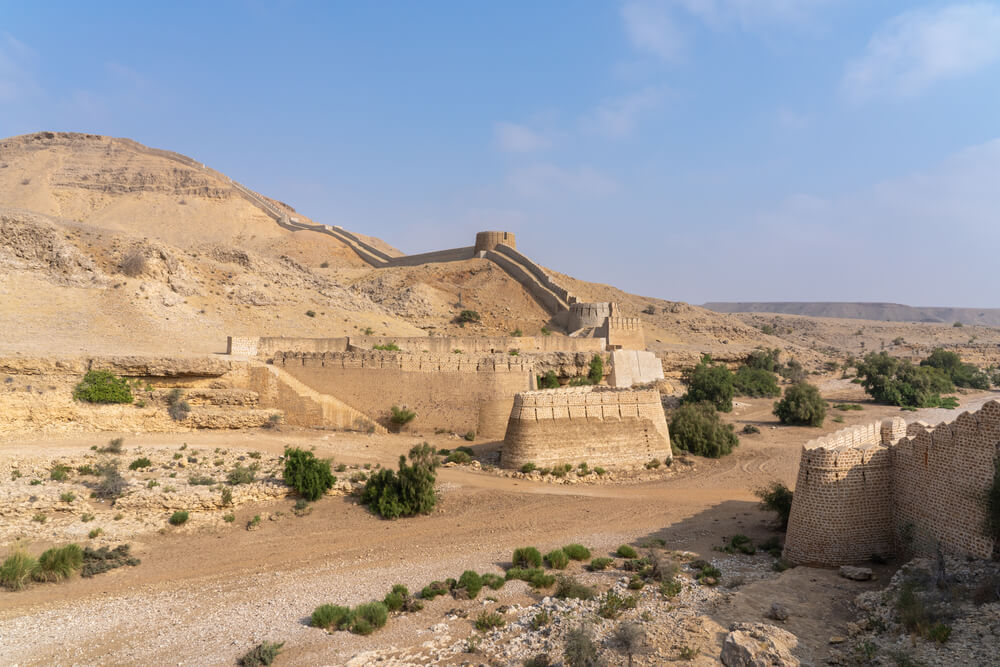
Waggun jo Tarru (Crocodiles Spring)
Another spring called Crocodiles Spring is visible in Rani Kot Jamshoro. Crocodiles once resided in this stream, according to the locals.
Facilities at Ranikot Fort:
Let’s discuss some facilities near Ranikot Fort.
Resorts & Hotels
There are many Resorts & Hotels near Rani Kot Fort Jamshoro. One can easily plan for accommodation at any of them. The luxury resorts and hotels offer the best comfort and amenities and are only short distances from the Fort.
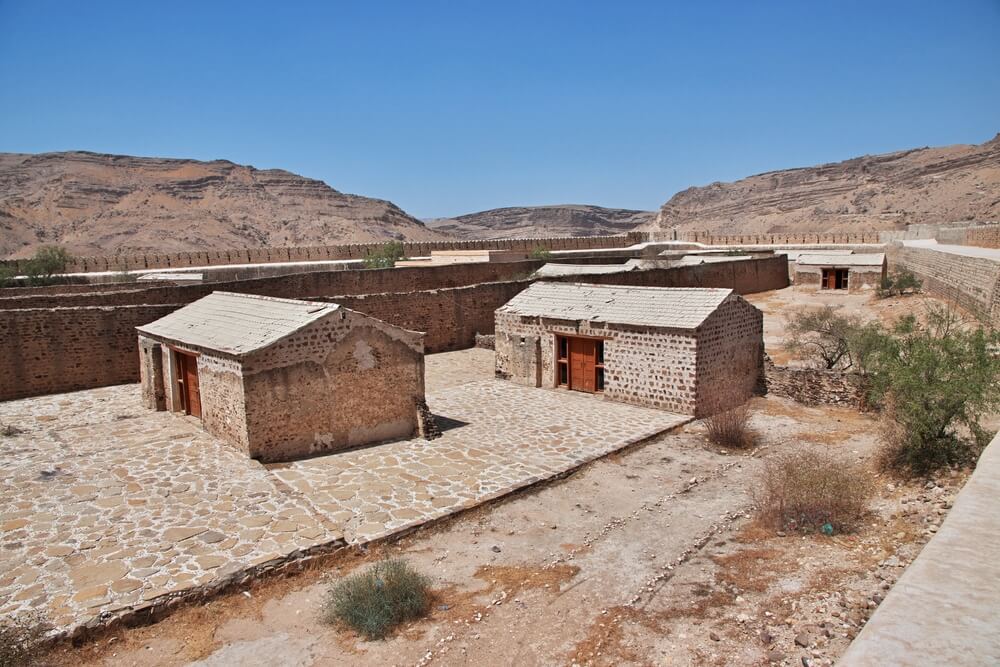
Ranikot Restaurants
So, you’re making your way to Ranikot Fort. Good choice. But before you go, check out the restaurants in the area. You’ll be hungry after all that hiking, and the food here is delicious. The locals know how to cook up a storm, and you’re in for a real treat.
Parking Area
Parking is not an issue as many private parking facilities are outside the Fort.
Why is Ranikot Fort in Pakistan famous?
It is famous for many things, but its size is among them. It’s the largest Fort in the world, stretching 35 kilometers. It’s also home to some pretty unique architecture, and if you’re lucky enough to visit, you’ll see some of the most awe-inspiring views in the country. The Fort is atop a steep hill, which makes for an even more dramatic sight. But Rani Kot Fort Jamshoro isn’t just about looks. Built on a strategic location, establishing this stronghold was to protect the borderlands between Sindh and Balochistan. So if you’re interested in history, this is the place for you.
How to Reach Ranikot Fort from Karachi?
The Indus Highway connects Karachi and Sann; the trip takes about an hour. A detour road to the Fort begins a short distance from Sann, the closest town, and travels along a rough 21 km (13 mi) road before arriving at the Fort’s Sann Gate on the eastern side. Sann is the railhead on the Pakistan Railway’s Kotri-Larkana line. Getting a private car is the only option because public transportation is difficult.
Ranikot Fort Entry Tickets & Timings:
There is no entry fee for Rani Kot Fort Jamshoro. It remains open 24 hours; however, the best time to visit is between 8:00 AM to 7:00 PM.
Location of Ranikot Fort Karachi:
Rani Kot Fort Jamshoro is situated 90 kilometers (56 miles) north of Hyderabad along the Indus Highway in the Sindh region of southern Pakistan.
FAQs
How old is Ranikot fort?
Have you ever wondered how old this is? It’s quite a mystery. Ranikot Fort in Pakistan is more or less 2000 years old Fort, but nobody knows for sure.
What is the length of the Ranikot Fort?
This gigantic Fort has a length of about 35 kilometers and is on the connecting summits of the Kirthar Hills; it resembles the Great Wall of China.
Conclusion
Today, Ranikot Fort in Pakistan is a popular tourist destination, and visitors can explore its many fortifications and tunnels. If you’re feeling adventurous, you can even hike to the top of the Fort for stunning views of the surrounding countryside. It’s a great place to explore, with plenty of mysteries and stories.
